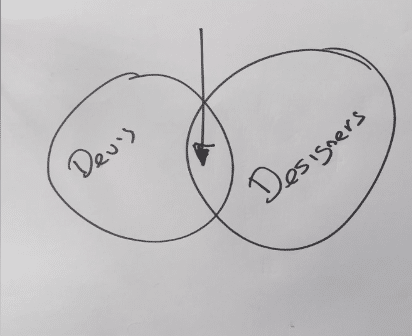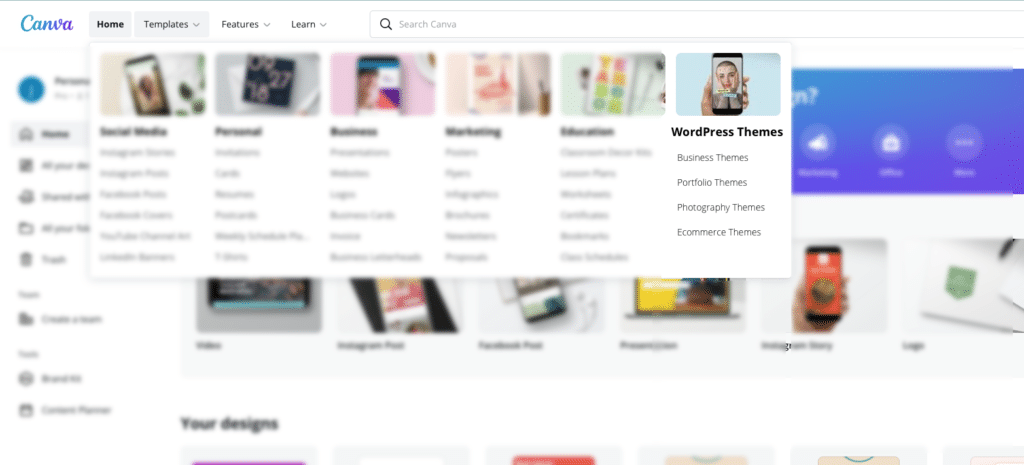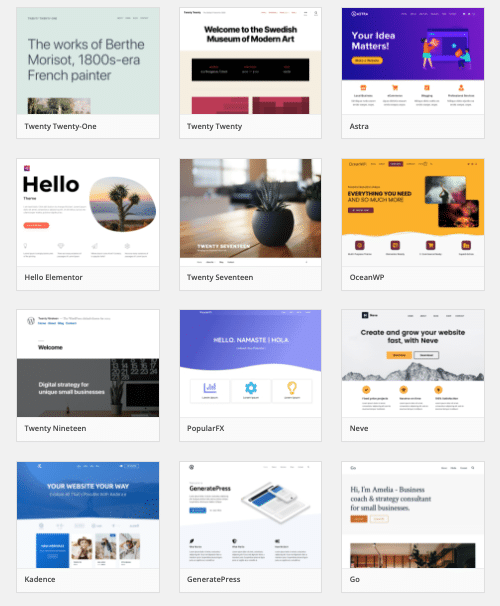Introduction
A great big earth-shattering change is about to hit WordPress.
It’s called Full Site Editing (FSE), and it is coming to WordPress this December.
Full Site editing brings the power of the Gutenberg Block Editor to your entire website.
Previously we used the Gutenberg Block Editor to create our Posts and Pages, with FSE we’ll use Gutenberg to build out our entire website.
That means we’ll use Gutenberg Blocks to build everything, the header, the navigation, widgets, and footer.
FSE is a big change for WordPress users and site builders.
But I believe that FSE is also going to change who builds WordPress themes and the type of WordPress Themes we build.
And that’s what I want to talk about in this article.
The no-code WordPress theme builder
In the past, building WordPress themes was complex.
This was because of the WordPress theme architecture.
Previously, themes offered such customization options via the Customizer. However, there was never a general system that all themes used. Instead each theme solved the customizer settings a bit differently. Customizer theme settings were not very user-friendly and the code for customizations via the Customizer were quite complex.
Ellen Bauer
FSE simplifies the WordPress theme architecture because, in an FSE World, themes only have to worry about Blocks.
This simplification is also being made easier by how styles and theme settings are handled in FSE Themes (check out this article on theme.json).
Who builds WordPress Themes is about to change
Let’s start by looking at who currently builds WordPress themes.
Here’s a very simplified view of the WordPress theme workforce.
We have a developer community and we have a designer community.
And at the intersection, we have a smaller group of people who can design and can code.

In the past, if you wanted to build a WordPress theme then you would need to bring these two groups together.
Or if you were lucky, you were a rare individual who is a good designer that can code (or vice versa).
But with FSE this Venn diagram might be about to change.
Because of the technical simplification of FSE, it’s possible to imagine a world where it isn’t necessary to know any code to build a WordPress theme.
And there is a huge market opportunity right now to help the Designer community build WordPress Themes without requiring any code.
We can already see no-code tools emerging in other markets that have traditionally required development resources.
For example, we are seeing huge growth of no-code development platforms and tools such as Bubble, WebFlow, Thunkable, Parabola, Voiceflow, and Airtable.
And the market conditions are in place that should drive innovation in the WordPress theme market.
- Technological simplification
- Untapped workforce
- Big market opportunity
And my prediction is that in 2022, we’ll see a forward-looking company building no-code tools, that empower the designer community to build WordPress Themes.
I can certainly imagine, a kind of Canva experience, where you go onto a website, build your WordPress theme design, click a button, and hey presto your new theme is downloaded.
In fact, I wouldn’t be surprised if at some point Canva introduced WordPress theme design.
Imagine the impact that would have on the WordPress theme market!
If you can own the theme-building process, then it’s relatively easy to build a marketplace around that process.
That’s why the opportunity is so big.

Now I’m going to explain how I believe FSE will change WordPress themes.
The Theme Revolution is coming
First a little history.
In 2008, there were just a few WordPress Theme companies.
One of the early companies was WooThemes (now WooCommerce / Automattic).
I bought one of their first Themes, called Gazette.
I really loved Gazette, it made it easy to create a pro-looking news website.
Other Theme companies grew at this time, including Elegant Themes (makers of Divi) and StudioPress (makers of Genesis)
In the early days, the number one focus of these early Theme companies was great design.
They all built beautiful-looking themes.
In the space of a few years of each other, however, they had all released multi-purpose themes.
Elegant Themes released the Divi Theme, WooThemes released the Canvas Theme, and StudioPress released the Genesis Theme Framework.
What made all these new multi-purpose themes great, was the level of control that they gave to DIY users.
With Canvas, Divi and Genesis, users could change the layout, the colours, the fonts, and the entire design of their website.
They were successful because they tapped into a market that was historically served by agencies or developers.
Now for the first time, DIY’ers could design their websites easily, without learning CSS, HTML, or PHP.
And all three multi-purpose Themes became hugely popular.
Canvas, Divi, and Genesis signalled a big market shift at the time that has continued right up to today.
If you take a look at the Themes that are currently popular on wordpress.org we see the same thing.

The common denominator that unites the most popular WordPress themes is the level of customization options built into each Theme.
The number one selling point is still utility and customization options.
Multipurpose Themes still dominate the WordPress market.
But with FSE the ability to customize the design and layout of your website is built right into the WordPress core.
- Header designer
- Navigation designer
- Custom headers
- Custom navigation
- Footer designer
- Custom page templates
- Custom post templates
- Custom post archives
- Landing pages
- Global styles
- Block level styles
Before FSE all this would have to have been built into the theme.
But this functionality is now native to WordPress core.
This is going to have a BIG impact on the WordPress Theme market.
And in my view is going to signal the beginning of the end of the reign of multi-purpose Themes.
Because WordPress FSE makes all Themes multi-purpose.
Conclusion
Do you ever hear the comment that all WordPress websites look the same?
Well, partly this is due to the rise of multi-purpose Themes over the past 10 years.
But with FSE that era is ending.
So what comes next?
My belief and hope are that we’ll see a return to Themes winning market share by offering beautiful designs.
All hail the rise of beautifully designed, lightweight, and fast Themes.
Imagine a world where designers have the tools at their fingertips to build beautiful no-code Themes, and the market rewards top design.
That sounds exciting to me!
Leave a Reply